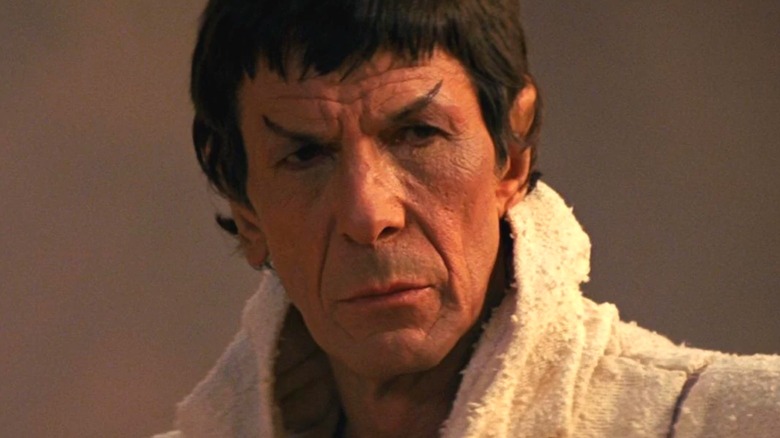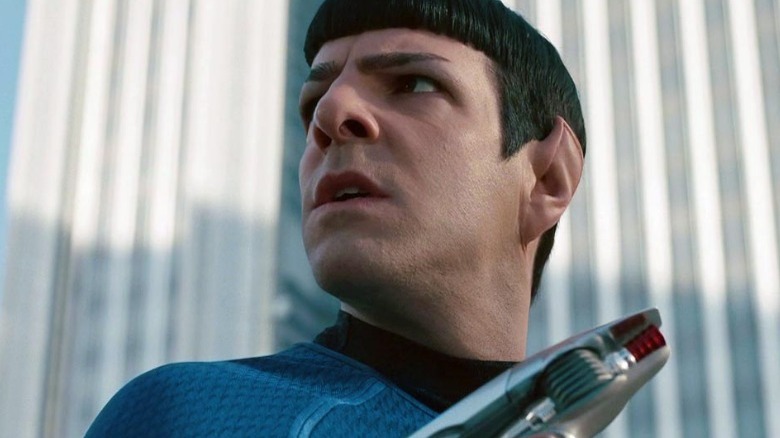Why The Star Trek Timeline Is Unreliable (And Could Create Plot Holes)
Since the series that started it all took over the television scene, the "Star Trek" franchise has expanded in more ways than one. The late Gene Roddenberry's creation has become a global juggernaut with installments spanning TV, movies, books, video games, and more. While all of this new media is welcomed by the fandom, it's impossible to ignore some of its drawbacks. In addition to making the saga a bit more difficult for new fans to get into, the canon has become increasingly complex and unreliable — thanks in large part to its use of time travel.
A thread by u/canadianredditor16 asked the "Star Trek" Reddit community to rattle off some dark truths about the franchise that are often overlooked. u/4thofeleven came into the discussion to point out how time travel has made the "Star Trek" universe a mess over the years. They explain that in-universe, multiple forms of timeline traversal have been established, rendering continuity unreliable as a consequence. With some of these methods being so easy to replicate, it stands to reason that the timeline is being overwritten at any given moment, and no one can do anything to stop it.
If you're looking for one of the most dramatic examples of how time travel has changed "Stark Trek" as we know it, look no further than 2009's "Star Trek."
To worsen the confusion, there are also multiple timelines
In 2009, director J.J. Abrams took it upon himself to bring "Star Trek" back to the movies. Instead of making just another sequel, he put together a tale set prior to the events of "Star Trek: The Original Series." Although, he didn't plan to simply provide context for the events of the iconic series. Abrams sought to rewrite "Star Trek" history using yes, you guessed it, time travel to create a brand new timeline. This occurs when a black hole created by the Romulan sun going supernova transports a Romulan named Nero (Eric Bana) from the year 2387 back to 2233, which leads him to attack the USS Kelvin and inadvertently create an alternate reality.
Dubbed the Kelvin timeline after George Kirk's (Chris Hemsworth) ship, this continuity is similar to the one fans are familiar with but has just enough differences to stand on its own. The sequels to 2009's "Star Trek," — "Star Trek Into Darkness" and "Star Trek Beyond" — keep this timeline going, and, should it come to fruition, a third sequel would likely do the same. Otherwise, new "Star Trek" titles such as "Star Trek: Picard" and "Star Trek: Strange New Worlds" have built on the long-standing original timeline. Although, "Picard" specifically has referenced the Romulan sun disaster, tying the two universes together, albeit loosely.
Time travel is a tricky thing in fiction, with it able to serve as the catalyst for all kinds of plot holes and story contradictions. Not even a science fiction juggernaut like "Star Trek" has been able to avoid it and the baggage it brings along.

